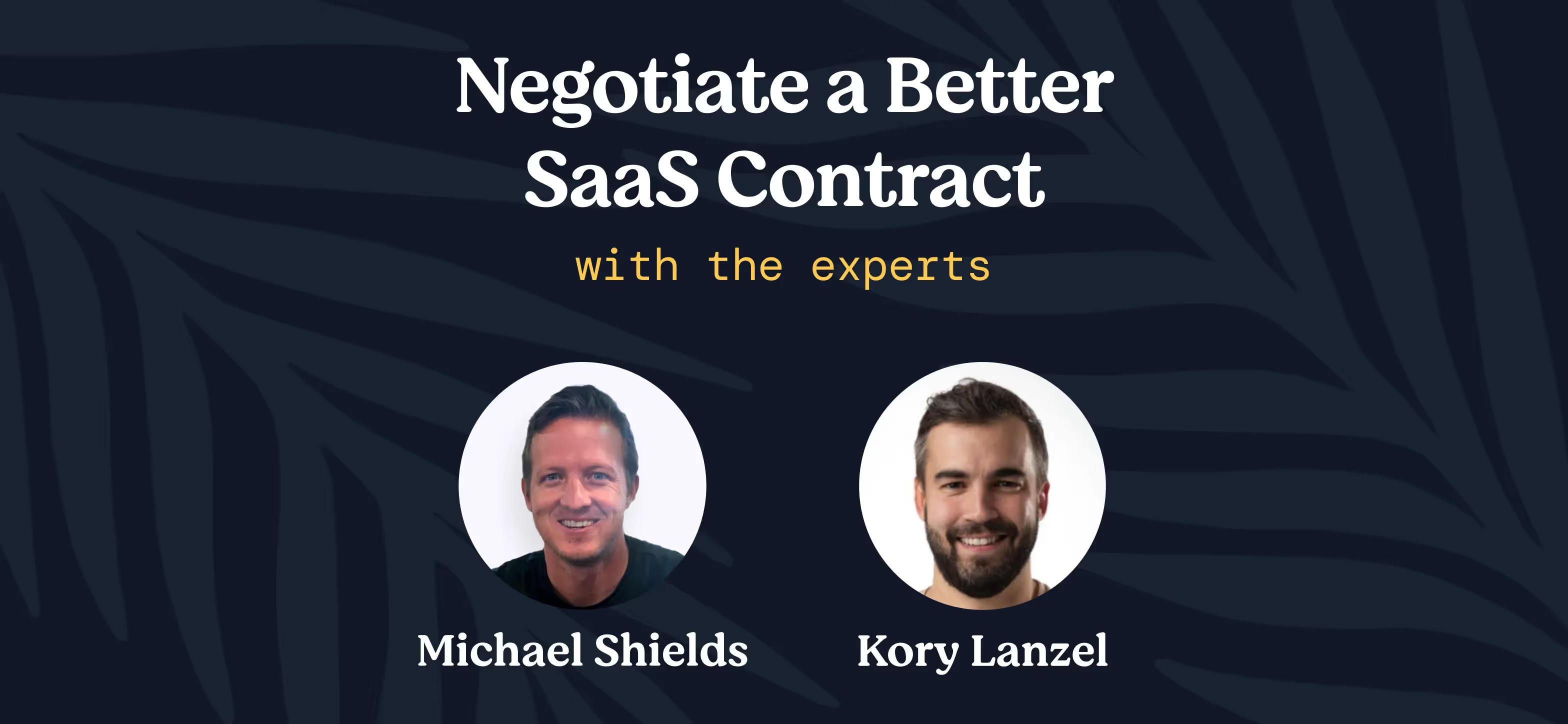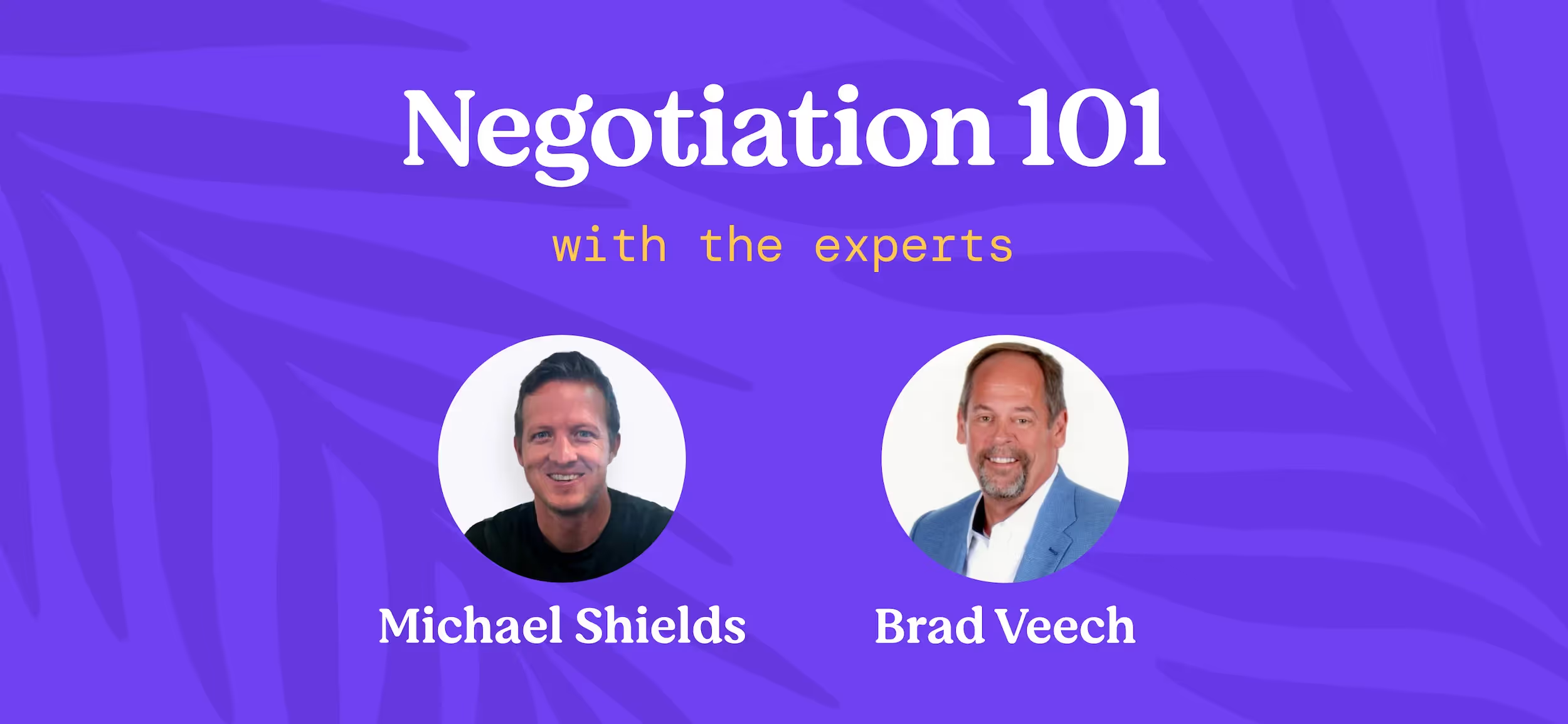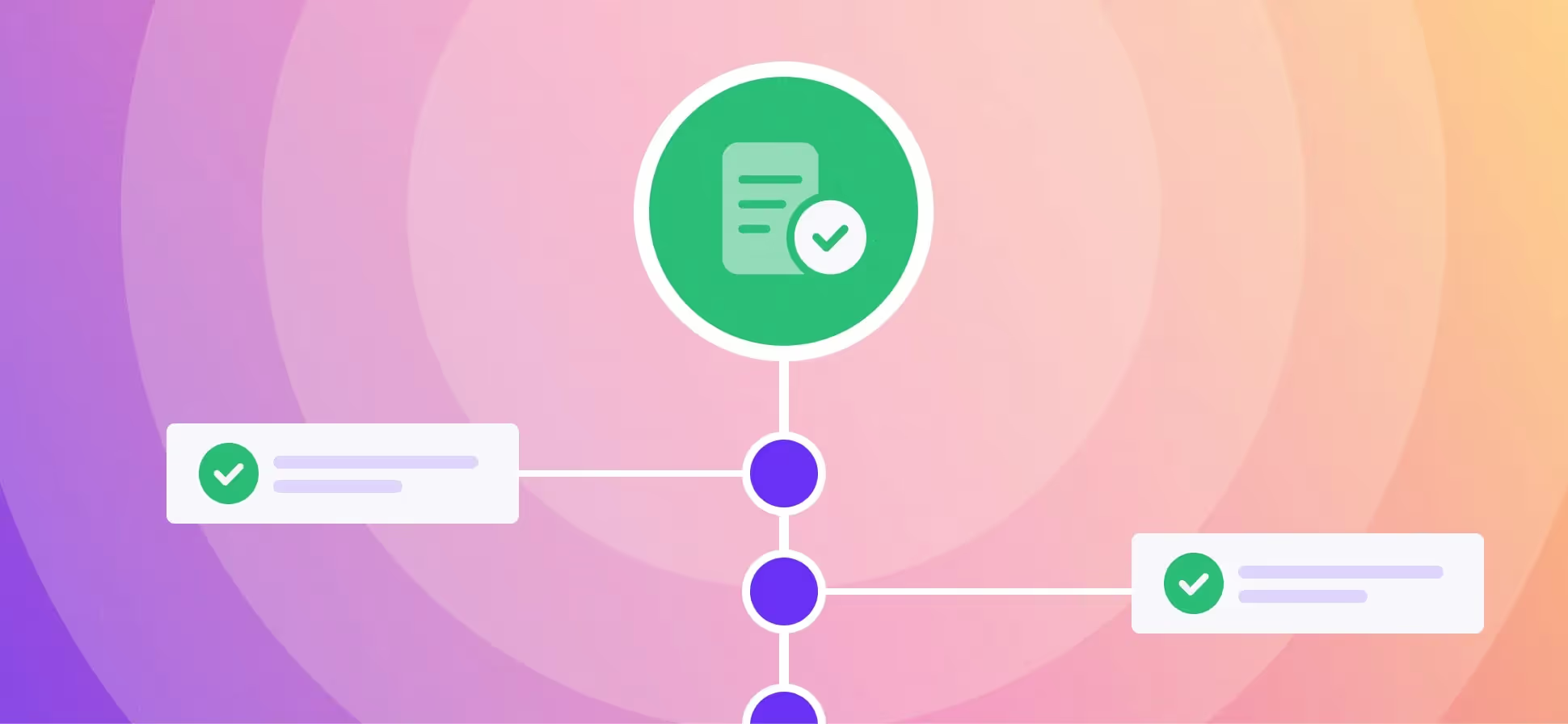A successful SaaS negotiation is like orchestrating an exquisite meal.
It takes a good bit of planning, the right ingredients, and a dash of creativity to come up with something everyone is thrilled with in the end.
If you pull it off, it can lead to more fruitful conversations with suppliers and major cost savings for your organization.
Two of those key ingredients: data and time.
It’s something that two of Tropic's own procurement experts have utilized throughout their careers as skilled negotiators.
Michael Shields, Tropic’s Head of Procurement Strategy, and Kory Lanzel, Tropic’s Senior Regional Manager of Procurement Services, provided their first-hand best practices for negotiating SaaS contracts.
One common theme was clear between their decades of expertise: data and time are crucial to the success of any negotiation.
Here’s what both elements look like in action.
Define your SaaS shopping list with data
You might pick up a few groceries without a list, but you wouldn't plan a dinner for 10 without one.
That's what's at stake in every SaaS negotiation. The contract you negotiate is likely to affect many people in your organization, so you'll want to make a plan and have a detailed list before you go in. It will also ensure that you get good value and don't overspend.
Considering the fact that purchasing software involves high-stakes five- or six-figure contract negotiations, shopping lists are paramount.
Building the right SaaS shopping list starts by asking the right questions, something that Shields and Lanzel say is a critical step in their preparation for any negotiation.
Questions about your organization
- What problem is this tool solving for me?
- What’s my use case for this software/tool?
- What features do I really need?
- [For Renewals] What has been the usage of this tool?
- [For Renewals] Can I audit the ROI of this tool?
- [For Renewals] Has this supplier been meeting my goals?
Questions about the competitive landscape
- Is a supplier's product, service, or solution proven in their market?
- How do they package their pricing?
- How do they set themselves apart from their competition?
For the right answers about what you need as an organization, leverage data to gain insight.
Data will show you what you actually need (and don’t need) before any negotiation, without getting distracted by the bells and whistles that sales reps will try to sell you on. It solidifies your position before any negotiation.
According to Shields, “The starting point of any negotiation should be focused on how much value you’re getting (from a tool)–not how much you’ve paid before.”
Using internal benchmarks and trends to inform your needs ensures you’re focused on value over anything else…from the initial conversation all the way to the signature on the dotted line.
.avif)
Even better, data can also yield a high return on investment down the line. Companies that use accurate benchmarks throughout their procurement process generate a productivity improvement valued at more than $63,000.
Here are some examples of how you can employ data to define your shopping list:
- Leverage internal data to understand where your organization and processes are lacking efficiency. You may find that it takes 3 months to get contracts approved or realize that your finance team is drowning in manual tasks.
- Leverage SaaS management data to understand the cost of each license, usage trends, and duplicative tools. You may find that you're only using half of the 100 Salesforce licenses you've bought or see that you’re paying for multiple project management tools.
- Leverage competitive data to understand pricing benchmarks, alternatives, and purchasing trends. You may find the range in which other companies have been paying for the tool you're targeting or use historical purchasing trends to increase your leverage in negotiations.
Let data steer your negotiation in the right direction by giving you greater clarity and insight into what you actually need on your SaaS shopping list.

Engage early so time is on your side
As the saying goes, “The early bird gets the worm.”
In this case, those who engage early with suppliers and internal stakeholders can cut costs considerably.
In fact, we’ve found:
- Companies who start the renewal conversation 90+ days in advance (compared to 2 weeks in advance) save 5X more money on average.
- Companies who start the renewal conversation 90+ days in advance (compared to 30 days) save 3X more money on average.
.avif)
The cost savings is a byproduct of what early engagement allows you, which is more flexibility and levers to pull at your disposal with external and internal stakeholders throughout the negotiation.
Need to sift through data to see if you really need this tool? Need to rework the internal budget to have more money? Need to research and leverage competition to gain an edge? Whatever it is, you have plenty of time and space to pull these levers when appropriate if you start the discussion sooner rather than later.
Additionally, the time afforded to you by starting the conversation early means you can dig even deeper into your tech stack and data to find “opportunities to reframe the discussion and maybe even resize an account to uncover savings (if you need),” says Lanzel.
Here are two examples:
- Marketing makes it known that they want to renew a seat-based contract with a MarTech provider at the same amount of licenses you had last year (40). But you take time to dig deeper into the data and find out that only 20 users have actively logged into that tool in the past 60 days.
- Sales is currently on a seat-based contract of 100 licenses for a Sales Intelligence provider. They make it known that they want to renew this contract and expand to 150 licenses because they’re expecting more employees to use this tool. But you take time to dig deeper into the data and find out there are only 50 active users of this tool in the past 60 days.
In both examples, more time gives you more opportunities to save money. The additional time also gives you a chance to reframe the entire conversation with internal stakeholders and redirect a negotiation with suppliers.
Engaging early lets you play offense and be proactive. It’s much easier to pull the levers you need and uncover cost-saving opportunities with time on your side.
Want to supercharge your negotiations even further? Learn more about Expert Advisory to gain playbooks, pricing benchmarks, and one-on-one coaching.
Related blogs
Discover why hundreds of companies choose Tropic to gain visibility and control of their spend.







